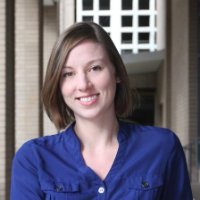
As founder of a consulting business, Civic Sphere, I work on issues of different scales in the built, the natural, and the “unseen” spheres of people’s day-to-day experiences. I consider the residents of a given area my client. I have been influenced by two main life experiences: 1) growing up with a father who had paraplegia and 2) working in Haiti and Philippines. My father taught me an important lesson in empathy. No matter how far removed someone might feel from the personal situations of strangers, they are not separate. At any moment, we can become less independent due to an unforeseen disability, lose a home to disaster, or lose the ability to earn the income we anticipated. Loss is a shared human experience, and it is important that we work together to design environments to acknowledge this fact of life.
Working in Haiti after the 2010 earthquake was a reality check for me for a number of reasons. The one realization that most affected my work was this: in countries where we have legal structures in place for protection, effective institutions to oversee changes, and an educated population, major improvements really are possible. It may seem sometimes that the barriers are too high, but they are not when determination and time are taken into consideration. The basic infrastructure for change is present, and that is everything. There may be many improvements to make, to be sure, but it can be done. I carry this belief with me to each program, project, and initiative.
I bring skills from the architecture and design sphere to urban improvements by 1) demonstrating how systems connect, 2) structuring processes, and 3) using graphic illustration as a tool for clarity. I believe designing and building cities requires a careful balance of art and science, and I bring this balance into my work each day. My Linked In profile explains my life's professional path in more detail.
Working in Haiti after the 2010 earthquake was a reality check for me for a number of reasons. The one realization that most affected my work was this: in countries where we have legal structures in place for protection, effective institutions to oversee changes, and an educated population, major improvements really are possible. It may seem sometimes that the barriers are too high, but they are not when determination and time are taken into consideration. The basic infrastructure for change is present, and that is everything. There may be many improvements to make, to be sure, but it can be done. I carry this belief with me to each program, project, and initiative.
I bring skills from the architecture and design sphere to urban improvements by 1) demonstrating how systems connect, 2) structuring processes, and 3) using graphic illustration as a tool for clarity. I believe designing and building cities requires a careful balance of art and science, and I bring this balance into my work each day. My Linked In profile explains my life's professional path in more detail.